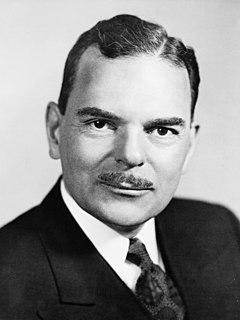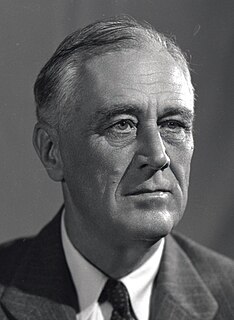
The Fifteenth Amendment to the United States Constitution prohibits the federal government and each state from denying or abridging a citizen's right to vote "on account of race, color, or previous condition of servitude." It was ratified on February 3, 1870, as the third and last of the Reconstruction Amendments.

The Twenty-fourth Amendment of the United States Constitution prohibits both Congress and the states from conditioning the right to vote in federal elections on payment of a poll tax or other types of tax. The amendment was proposed by Congress to the states on August 27, 1962, and was ratified by the states on January 23, 1964.
Smith v. Allwright, 321 U.S. 649 (1944), was a landmark decision of the United States Supreme Court with regard to voting rights and, by extension, racial desegregation. It overturned the Texas state law that authorized parties to set their internal rules, including the use of white primaries. The court ruled that it was unconstitutional for the state to delegate its authority over elections to parties in order to allow discrimination to be practiced. This ruling affected all other states where the party used the white primary rule.
United States v. Carolene Products Company, 304 U.S. 144 (1938), was a case of the United States Supreme Court that upheld the federal government's power to prohibit filled milk from being shipped in interstate commerce. In his majority opinion for the Court, Associate Justice Harlan F. Stone wrote that economic regulations were "presumptively constitutional" under a deferential standard of review known as the "rational basis test".
White primaries were primary elections held in the Southern United States in which only white voters were permitted to participate. Statewide white primaries were established by the state Democratic Party units or by state legislatures in South Carolina (1896), Florida (1902), Mississippi and Alabama, Texas (1905), Louisiana and Arkansas (1906), and Georgia (1900). Since winning the Democratic primary in the South almost always meant winning the general election, barring black and other minority voters meant they were in essence disenfranchised. Southern states also passed laws and constitutions with provisions to raise barriers to voter registration, completing disenfranchisement from 1890 to 1908 in all states of the former Confederacy.
Nixon v. Herndon, 273 U.S. 536 (1927), was a United States Supreme Court decision which struck down a 1923 Texas law forbidding blacks from voting in the Texas Democratic Party primary. Due to the limited amount of Republican Party activity in Texas at the time following the suppression of black voting through poll taxes, the Democratic Party primary was essentially the only competitive process and chance to choose candidates for the Senate, House of Representatives and state offices.
Disfranchisement after the Reconstruction era in the United States, especially in Southern states, was based on a series of laws, new constitutions, and practices in the South that were deliberately used to prevent Black citizens from registering to vote and voting. These measures were enacted by the former Confederate states at the turn of the 20th century. Efforts were made in Maryland, Kentucky, and Oklahoma. Their actions were designed to thwart the objective of the Fifteenth Amendment to the United States Constitution, ratified in 1870, which prohibited states from depriving voters of their voting rights on the basis of race. The laws were frequently written in ways to be ostensibly non-racial on paper, but were implemented in ways that purposely suppressed black voters. Beginning in the 1870s, white Democrats used violence by paramilitary groups, as well as fraud, to suppress black Republican voters and turn Republicans out of office. After regaining control of the state legislatures, Democrats were alarmed by a late 19th-century alliance between Republicans and Populists that cost them some elections. After achieving control of state legislatures, white Democrats added to previous efforts and achieved widespread disfranchisement by law: from 1890 to 1908, Southern state legislatures passed new constitutions, constitutional amendments, and laws that made voter registration and voting more difficult, especially when administered by white staff in a discriminatory way. They succeeded in disenfranchising most of the black citizens, as well as many poor whites in the South, and voter rolls dropped dramatically in each state. The Republican Party was nearly eliminated in the region for decades, and the Democrats established one-party control throughout the southern states.
The Government of Mississippi is the government of the U.S. state of Mississippi. Power in Mississippi's government is distributed by the state's Constitution between the executive and legislative branches. The state's current Governor is Tate Reeves. The Mississippi Legislature consists of the House of Representatives and Senate. Mississippi is one of only five states that elects its state officials in odd numbered years. Mississippi holds elections for these offices every four years in the years preceding Presidential election years. Thus, the last year when Mississippi elected a Governor was 2019, and the next gubernatorial election will occur in 2023.
Claude Pollard was Attorney General of Texas from 1927–1929. During his service in public office he defended laws aimed at the disenfranchisement of black voters.
Grovey v. Townsend, 295 U.S. 45 (1935), was a United States Supreme Court decision that held a reformulation of Texas's white primaries system to be constitutional. The case was the third in a series of Court decisions known as the "Texas primary cases".
Terry v. Adams, 345 U.S. 461 (1953), was a United States Supreme Court decision that held white-only pre-primary elections to be unconstitutional. It was the last in a series of court cases addressing the system of white primaries designed to disenfranchise African-American voters in the southern United States.
This is a timeline of voting rights in the United States. The timeline highlights milestones when groups of people in the United States gained voting rights, and also documents aspects of disenfranchisement in the country.

The 1948 United States presidential election in North Carolina took place on November 2, 1948, as part of the 1948 United States presidential election. North Carolina voters chose 14 representatives, or electors, to the Electoral College, who voted for president and vice president.

The 1944 United States presidential election in Georgia took place on November 7, 1944, as part of the wider United States Presidential election. Voters chose 12 representatives, or electors, to the Electoral College, who voted for president and vice president.

Maud E. Craig Sampson Williams was an American suffragist, teacher, civil rights leader, and community activist in El Paso, Texas. In June 1918, she formed the El Paso Negro Woman's Civic and Equal Franchise League and requested membership in the National American Woman Suffrage Association (NAWSA) through the Texas Equal Suffrage Association (TESA), but was denied. Williams organized African-American women to register and vote in the Texas Democratic Party primary in July 1918. She was one of the founders and a charter member of the El Paso chapter of the NAACP, which was the first chapter in the state of Texas. Williams served as the vice president of the El Paso chapter from 1917 to 1924 and remained active in the NAACP until her death. Williams played a significant role in the desegregation of Texas Western College in 1955, which was the first undergraduate university in Texas to be desegregated.
The White Municipal Party was a white supremacist political organization established in Tampa, Florida to eliminate African American influence in municipal elections. The group limited local elections to white candidates for many years by excluding African Americans from party membership and thereby blocking them from participating in primary elections where the eventual election winners were actually determined. The party produced an unbroken series of mayors in Tampa from 1910 until 1947.

The history of black suffrage in the United States, or the right of African Americans to vote in elections, has had many advances and setbacks. Prior to the Civil War and the Reconstruction Amendments to the U.S. Constitution, some blacks in the United States had the right to vote, but this right was often abridged or taken away. After 1870, blacks were theoretically equal before the law, but in the period between the end of Reconstruction era and the passage of the Civil Rights Act of 1964 this was frequently infringed in practice.
The Terrell Election Law was part of a wave of election reform legislation instituting a poll tax, secret ballot, and a closed primary system in Texas from 1902 to 1907, during the Progressive Era of United States history. The 1903 law allowed parties to restrict who could vote in their primaries, paving the way to exclude African-American voters from Democratic Party primaries. A poll tax had been established in 1902 and both laws disenfranchised African Americans. The Terrell Law was named for Alexander W. Terrell. The law was revised in 1905–1906. A 1923 amendment established a complete ban on African Americans voting in any Democratic Party primaries. Lawrence Aaron Nixon sued and the law was eventually thrown out by the U.S. Supreme Court. A modified version of the law was passed by the Texas Legislature and again thrown out upon reaching the U.S. Supreme Court in a suit filed by Nixon. The decision was written by Justice Benjamin N. Cardozo.
Lawrence Aaron Nixon was a doctor in El Paso, Texas who twice fought state election laws barring African-Americans from voting in Democratic Party primaries in Texas all the way to the United States Supreme Court. He was never allowed to join the El Paso Medical Society because of his African-American heritage.





